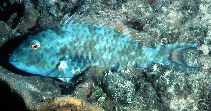http://www.fishbase.org/Summary/speciesSummary.php?genusname=Sparisoma&speciesname=chrysopterum ---> http://192.134.151.83/Summary/speciesSummary.php?genusname=Sparisoma&speciesname=chrysopterum
http://192.134.151.83/Summary/speciesSummary.php?genusname=Sparisoma&speciesname=chrysopterum ---> https://fishbase.mnhn.fr/Summary/speciesSummary.php?genusname=Sparisoma&speciesname=chrysopterum
https://fishbase.mnhn.fr/Summary/speciesSummary.php?genusname=Sparisoma&speciesname=chrysopterum ---> https://fishbase.mnhn.fr/summary/Sparisoma-chrysopterum.html
Sparisoma chrysopterum, Redtail parrotfish : fisheries, aquarium

You can
sponsor
this page
Common name (e.g. trout)
Genus + Species (e.g. Gadus morhua)
-

-
About this page
-
Languages
-
User feedbacks
-
Citation
-
Uploads
-
Related species
-


 Redtail parrotfish
Add your observation in
Fish Watcher
Upload your
photos
and
videos
Redtail parrotfish
Add your observation in
Fish Watcher
Upload your
photos
and
videos
Pictures
|
Videos |
Google image
 Sparisoma chrysopterum
Sparisoma chrysopterum
Male picture by
Randall, J.E.
Teleostei (teleosts) >
Eupercaria/misc
(Various families in series Eupercaria) >
Scaridae
(Parrotfishes) > Sparisomatinae
Etymology:
Sparisoma:
Latin, sparus = a fish with a golden head + Greek, soma = body (Ref.
45335
)
.
More on authors:
Bloch
&
Schneider
.
Environment: milieu / climate zone / depth range / distribution range
Ecology
Marine; reef-associated; depth range 1 - 15 m (Ref.
9710
). Tropical; 28°N - 4°N, 89°W - 51°W
Western Atlantic: Caribbean Sea.
Size / Weight / Age
Maturity: L
m
?
range ? - ? cm
Max length : 46.0 cm TL male/unsexed; (Ref.
7251
); common length : 25.0 cm TL male/unsexed; (Ref.
3802
)
Dorsal
spines
(total): 9;
Dorsal
soft rays
(total): 10;
Anal
spines
: 3;
Anal
soft rays
: 9. Young adults with black saddle-shaped markings at upper end of pectoral fin base; often vague, pale saddle-shaped area on top of caudal peduncle; and dorsal, anal, and pelvic fins red or orange (Ref.
26938
).
Occurs in coral reefs and adjacent habitats, the young especially in seagrass beds. Juveniles or primary-phase adults rapidly assume a mottled pattern with which they blend with the substratum when they come to rest on the bottom. Feeds on benthic algae and seagrasses.
Life cycle and mating behavior
Maturity
|
Reproduction
|
Spawning
|
Eggs
|
Fecundity
|
Larvae
Although protogyny was propossed for this species (Ref.
27876
), probably because testicular characteristics showed a secondary characteristic of sex-changed males, observations of overlapping size ranges of males and females, and males maturing at the same ages and sizes as did females, strongly suggest gonochorism (Ref.
103751
).
Robins, C.R. and G.C. Ray
, 1986. A field guide to Atlantic coast fishes of North America. Houghton Mifflin Company, Boston, U.S.A. 354 p. (Ref.
7251
)
IUCN Red List Status (Ref.
130435
)
Least Concern (LC)
; Date assessed:
15 September 2009
CITES
Not Evaluated
Not Evaluated
Threat to humans
Reports of ciguatera poisoning (Ref.
30303
)
Human uses
Fisheries: minor commercial; aquarium: commercial
FAO - Publication:
search
|
FishSource
|
Sea Around Us
More information
Countries
FAO areas
Ecosystems
Occurrences
Introductions
Stocks
Ecology
Diet
Food items
Food consumption
Ration
Common names
Synonyms
Metabolism
Predators
Ecotoxicology
Reproduction
Maturity
Spawning
Spawning aggregation
Fecundity
Eggs
Egg development
Age/Size
Growth
Length-weight
Length-length
Length-frequencies
Morphometrics
Morphology
Larvae
Larval dynamics
Recruitment
Abundance
BRUVS
References
Aquaculture
Aquaculture profile
Strains
Genetics
Electrophoreses
Heritability
Diseases
Processing
Nutrients
Mass conversion
Collaborators
Pictures
Stamps, Coins Misc.
Sounds
Ciguatera
Speed
Swim. type
Gill area
Otoliths
Brains
Vision
Tools
Bio-Quiz
|
E-book
|
Field guide
|
Identification keys
|
Length-frequency wizard
|
Life-history tool
|
Point map
|
Classification Tree
|
Catch-MSY
|
Special reports
Check for Aquarium maintenance
|
Check for Species Fact Sheets
|
Check for Aquaculture Fact Sheets
Download XML
Summary page
|
Point data
|
Common names
|
Photos
Internet sources
AFORO (otoliths) |
Aquatic Commons
|
BHL
|
Cloffa
|
BOLDSystems
|
Websites from users
|
Check FishWatcher
|
CISTI
|
Catalog of Fishes
:
genus
,
species
|
DiscoverLife
|
ECOTOX
| FAO - Publication:
search
|
Faunafri
| Fishipedia |
Fishtrace
| GenBank:
genome
,
nucleotide
|
GloBI
|
GoMexSI
(interaction data)
|
Google Books
|
Google Scholar
|
Google
| IGFA World Record |
MitoFish
|
National databases
|
Otolith Atlas of Taiwan Fishes
|
PubMed
|
Reef Life Survey
| Socotra Atlas |
Tree of Life
| Wikipedia:
Go
,
Search
| World Records Freshwater Fishing |
Zoological Record
Estimates based on models
Preferred temperature (Ref.
123201
): 26.5 - 28.3, mean 27.6 °C (based on 471 cells).
Phylogenetic diversity index (Ref.
82804
): PD
50
= 0.5000 [Uniqueness, from 0.5 = low to 2.0 = high].
Bayesian length-weight: a=0.01072 (0.00697 - 0.01647), b=3.10 (2.97 - 3.23), in cm total length, based on LWR estimates for this species & Genus-body shape (Ref.
93245
).
Trophic level (Ref.
69278
): 2.0 ±0.0 se; based on diet studies.
Generation time: 1.8 ( na - na) years. Estimated as median ln(3)/K based on 2
growth studies.
Resilience (Ref.
120179
): High, minimum population doubling time less than 15 months (K=0.7).
Fishing Vulnerability (Ref.
59153
): Low vulnerability (23 of 100).
Price category (Ref.
80766
):
High
.
Nutrients (Ref.
124155
): Calcium = 54.9 [32.2, 104.2] mg/100g; Iron = 0.781 [0.413, 1.321] mg/100g; Protein = 18.5 [16.3, 20.9] %; Omega3 = 0.0942 [, ] g/100g; Selenium = 33.3 [18.8, 63.7] μg/100g; VitaminA = 34.7 [10.3, 119.0] μg/100g; Zinc = 1.64 [1.12, 2.59] mg/100g (wet weight);
Back to Search
Random Species
Back to Top
Accessed through:
Not available
FishBase mirror site :
localhost
Page last modified by :
mrius-barile
- 20 July 2016
Fatal error
: Uncaught ArgumentCountError: Too few arguments to function checkEcotox(), 1 passed in /var/www/html/summary/speciessummary.php on line 2304 and exactly 3 expected in /var/www/html/includes/speciessummary.lib.php:2579 Stack trace: #0 /var/www/html/summary/speciessummary.php(2304): checkEcotox() #1 {main} thrown in
/var/www/html/includes/speciessummary.lib.php
on line
2579
|